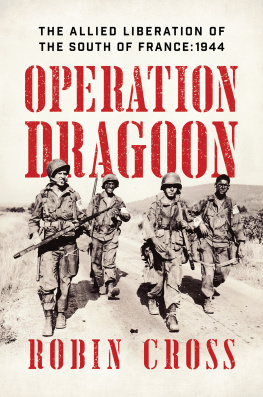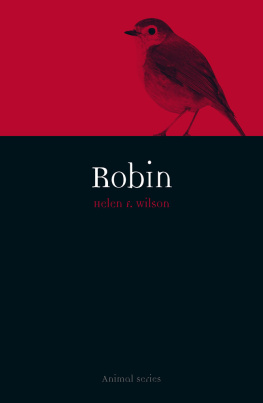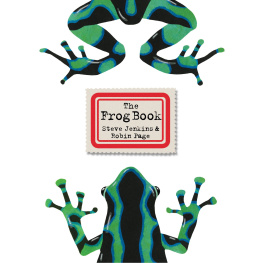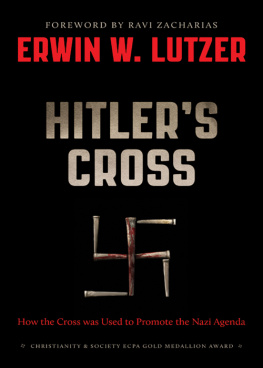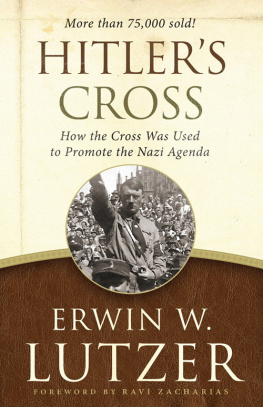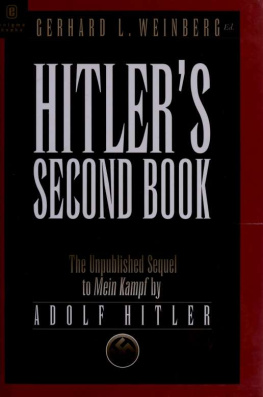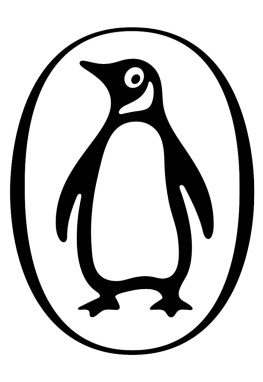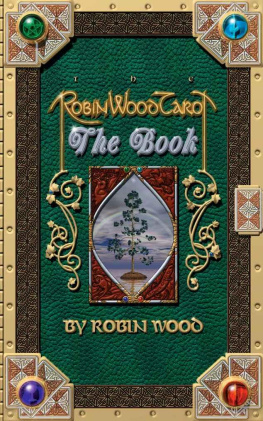Robin Cross - Hitler: An Illustrated Life
Here you can read online Robin Cross - Hitler: An Illustrated Life full text of the book (entire story) in english for free. Download pdf and epub, get meaning, cover and reviews about this ebook. year: 2013, publisher: Quercus Publishing, genre: Non-fiction. Description of the work, (preface) as well as reviews are available. Best literature library LitArk.com created for fans of good reading and offers a wide selection of genres:
Romance novel
Science fiction
Adventure
Detective
Science
History
Home and family
Prose
Art
Politics
Computer
Non-fiction
Religion
Business
Children
Humor
Choose a favorite category and find really read worthwhile books. Enjoy immersion in the world of imagination, feel the emotions of the characters or learn something new for yourself, make an fascinating discovery.

- Book:Hitler: An Illustrated Life
- Author:
- Publisher:Quercus Publishing
- Genre:
- Year:2013
- Rating:5 / 5
- Favourites:Add to favourites
- Your mark:
- 100
- 1
- 2
- 3
- 4
- 5
Hitler: An Illustrated Life: summary, description and annotation
We offer to read an annotation, description, summary or preface (depends on what the author of the book "Hitler: An Illustrated Life" wrote himself). If you haven't found the necessary information about the book — write in the comments, we will try to find it.
Hitler: An Illustrated Life — read online for free the complete book (whole text) full work
Below is the text of the book, divided by pages. System saving the place of the last page read, allows you to conveniently read the book "Hitler: An Illustrated Life" online for free, without having to search again every time where you left off. Put a bookmark, and you can go to the page where you finished reading at any time.
Font size:
Interval:
Bookmark:
AN ILLUSTRATED LIFE
ROBIN CROSS


New York London
2014 by Robin Cross
All rights reserved. No part of this book may be reproduced in any form or by any electronic or mechanical means, including information storage and retrieval systems, without permission in writing from the publisher, except by reviewers, who may quote brief passages in a review. Scanning, uploading, and electronic distribution of this book or the facilitation of the same without the permission of the publisher is prohibited.
Please purchase only authorized electronic editions, and do not participate in or encourage electronic piracy of copyrighted materials. Your support of the authors rights is appreciated.
Any member of educational institutions wishing to photocopy part or all of the work for classroom use or anthology should send inquiries to Permissions c/o Quercus Publishing Inc., 31 West 57th Street, 6th Floor, New York, NY 10019, or to .
e-ISBN 978-1-62365-379-8
Distributed in the United States and Canada by Random House Publisher Services
c/o Random House, 1745 Broadway
New York, NY 10019
www.quercus.com
On 20 April 1939 the German chancellor, Adolf Hitler celebrated his fiftieth birthday. It was no ordinary celebration. Orchestrated with painstaking attention to detail by his propaganda minister, Josef Goebbels, the festivities had begun on the evening of the 19th when Hitler was driven from the Reich Chancellery, at the head of a column of fifty limousines, along Berlins newly built east-west axis. The completion of this road marked the start of a massive building programme, planned to transform Berlin into Germania, the new capital of the world.
The limousines swept past cheering crowds, billowing banners and blazing torches to a brief opening ceremony conducted by Albert Speer, Hitlers court architect. Speer had been charged with the planning of Germania, a megalomaniac fantasy of colossal but lifeless classical buildings, dominated by a four-hundred-foot-high Victory Arch, and a Peoples Hall seventeen times bigger than the dome of St Peters which would hold a million people.
Hitler then returned to the new Reich Chancellery, also designed by Speer and completed early in 1939, where from the balcony he watched a parade of Nazi Party officials representing each of Germanys Gaue (units of regional administration). At midnight the leading members of the Fhrers court lined up to shower him with birthday gifts. Speer presented Hitler with a model of Germanias Victory Arch. Heinrich Himmler, the feared head of the SS, gave him an equestrian portrait of Frederick the Great by Adolf von Menzel. Captain Hans Baur, Hitlers personal pilot, gave him another model, that of the four-engined Focke-Wulf FW200 Condor which would become Hitlers personal aircraft later that summer.
The climax of the chancellors birthday came the next day with a massive military parade of fifty thousand troops and the cream of Germanys military hardware. The ambassadors of Britain, France and the United States, who had been recalled in March 1939 after Germanys annexation of Czechoslovakia, were notably absent. The outbreak of World War II was just over four months away.
Six years later, in a Reich Chancellery now pounded and pockmarked by bomb blasts, Hitler attended by his Nazi paladins Speer, Martin Bormann, Josef Goebbels, Hermann Gring and Joachim von Ribbentrop celebrated his fifty-sixth birthday in markedly different circumstances. The fall of the Third Reich was imminent, its Fhrer disintegrating, as Captain Peter Hartmann, a witness to the melancholy afternoon birthday gathering, observed:
Near the very end, on the day he celebrated his last birthday, he seemed closer to seventy than fifty-six. He looked what I would call physically senile. The man was living on nerves, dubious medicaments, and driving willpower. Sometimes even the willpower seemed to slacken. Then suddenly it would flash again with the old drive and fury.
These pages follow the grim career of Adolf Hitler from his modest origins to the pinnacle of power, and trace the downward curve of the descent to his death and that of the Nazi Party, recording the havoc and destruction that was heaped on Russia and Europe by the Fhrers armies and on Germany itself as a result of his rule.
However, the principal task which confronts any attempt to explain Hitlers early life and thought is that of disentangling the would-be politician of the early 1920s from the penniless dilletante ranting to his cronies in pre-war Vienna. In 1912 Hitler was a nobody, whose fantasies of fame had been rudely shattered. Twelve years later he was a rising politician, a man with a following, whose world view reached many more than his audience of idlers killing time in the reading room of a Mens Home to which his poverty had driven him. Adolf Hitler had a story to tell, and few would emerge in later years to challenge him on the facts.
The pre-1914 Hitler was, seemingly, a man with no political ambitions but with a mind nevertheless attuned to the turbulent cross-currents threatening to swamp the ailing Austro-Hungarian ship of state: Pan-Germanism and its antagonism towards the empires Slav population; anti-Semitism, sometimes casual, often deep-dyed, which was part and parcel of nationalist politics; and a deep suspicion of both the Catholic Church and of Social Democracy.
The post-1918 Hitler, however, nationalist, xenophobe and zealot, was possessed by high ambition and greed for absolute power. With absolute determination and a gift for oratory, he watered the seeds of hatred that would result in catastrophe for millions.
Adolf Hitler, contradictory and mercurial, was in the end a destroyer who left only chaos and misery behind him.
In the early twenty-first century we are still living with his toxic legacy.
Robin Cross, Kent 2009
Another Country
FAMILY LIFE
On 20 April 1889, an unseasonably overcast and chilly spring day, Adolf Hitler was born at the Gasthof zum Pommer at Braunau am Inn, a charming town of pastel-coloured historic houses, on the south bank of the River Inn which separates Austria and Germany. Today the house is unmarked except for a large stone of Mauthausen granite, standing by the front faade, which was erected in 1989 and bears the legend, For peace, freedom and democracy, never again Fascism, millions of dead admonish.
Adolf was the fourth child of six. His father, Alois Hitler, was a self-made man with little or no formal education who, by dint of hard work and diligence, had become a customs officer in the Austro-Hungarian civil service. He was well respected in Braunau but bore the marks of his caste. He was pompous, intensely jealous of his hard-won status, stingy, short-tempered and totally devoid of humour. His passion was bee-keeping, and it appears that the stuffy customs officer was more fond of the inhabitants of his apiary than of the members of his household. His third wife, and Hitlers mother, was Klara Polzl, who had originally been a maid at Aloiss home during his first marriage to Anna Glassl, a woman fourteen years his senior, from whom he had been legally separated in 1880. Alois then set up house with his mistress, Franziska (Fanni) Matzelberger, who was only a year younger than Klara and saw the maid as a potential rival. At her insistence, Klara was discharged. Fanni then bore Alois a son, before Annas death in 1883 cleared the way for their marriage. A daughter arrived two months after the wedding, but in August 1884 Fanni, aged only twenty-three, died of tuberculosis.
Font size:
Interval:
Bookmark:
Similar books «Hitler: An Illustrated Life»
Look at similar books to Hitler: An Illustrated Life. We have selected literature similar in name and meaning in the hope of providing readers with more options to find new, interesting, not yet read works.
Discussion, reviews of the book Hitler: An Illustrated Life and just readers' own opinions. Leave your comments, write what you think about the work, its meaning or the main characters. Specify what exactly you liked and what you didn't like, and why you think so.

